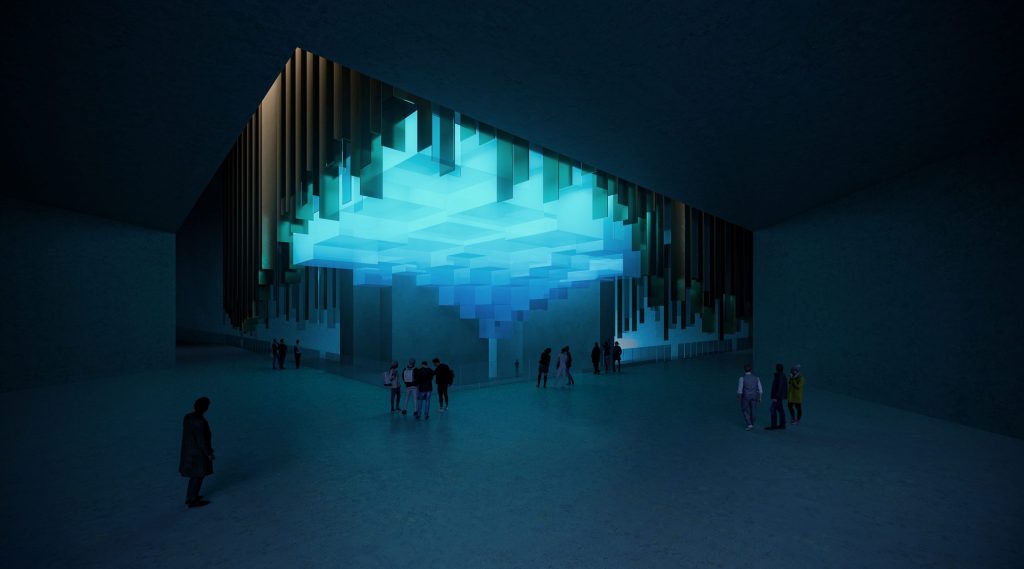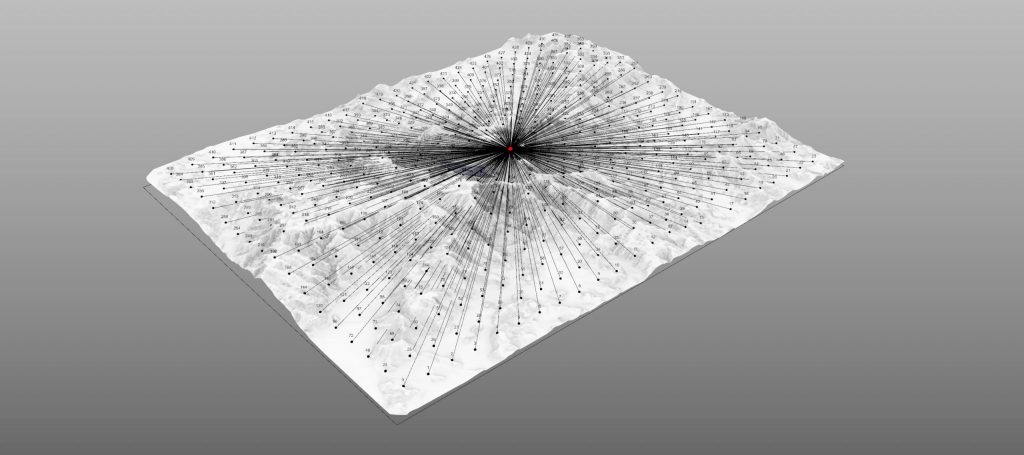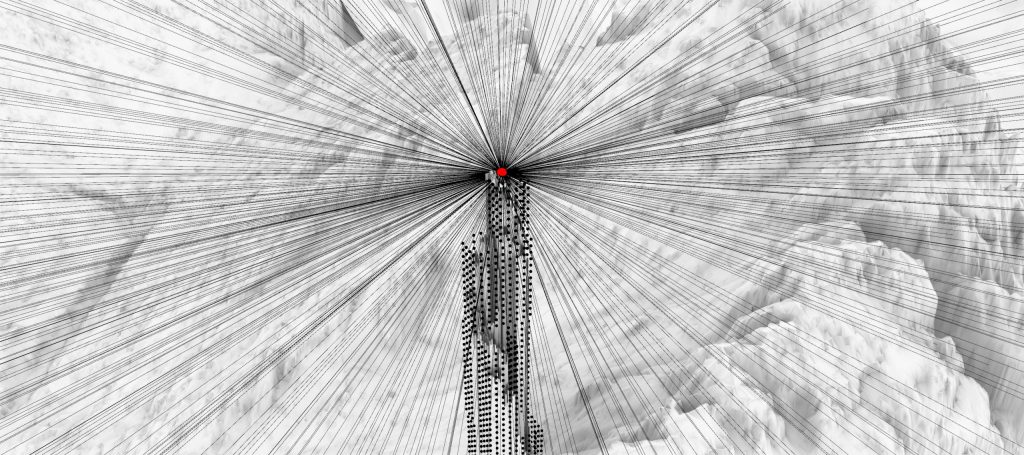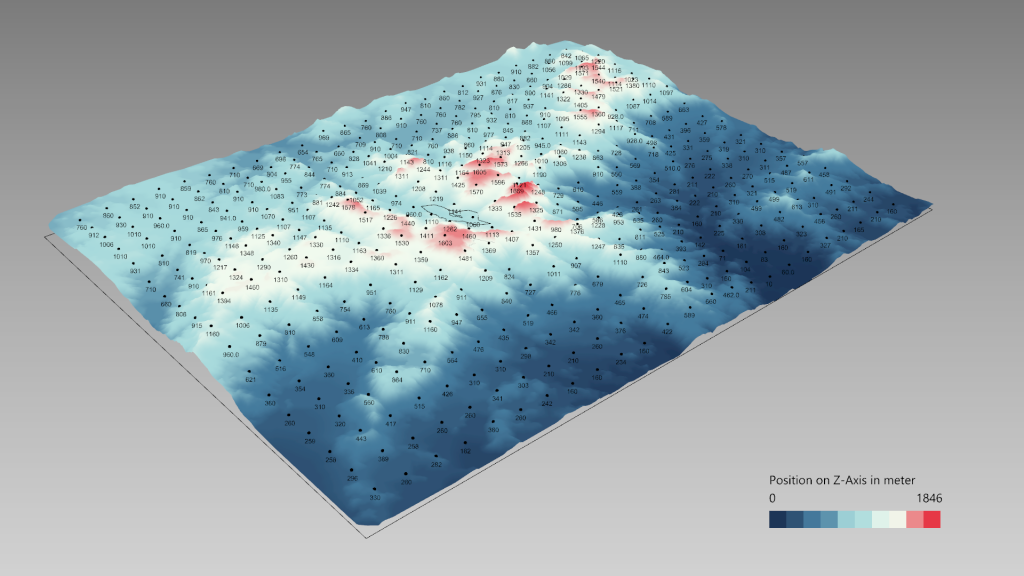Visibility inside space is a big design decision driver, but also exterior view quality is an important criterion. Especially in the NEOM Mountain Resort project and it’s museum tower, the “Tower of Discovery” had to be situated with the maximum quality of exterior views. Maximising the quality of exterior views, from the perspective of the tower visitors and inhabitants, also mean visibility from the outside across the NEOM Mountain Resort. Computing the exterior visibility for each facade panel on a large terrain mesh can be expensive, so I computed the visibility only on a few locations of a given grid, across the terrain, to then interpolate in-between, using kernel density estimation. The heatmap of average visibility computed is used as a parameter to predict the average visibility for any given location on the terrain, alongside the vertices x, y and z values.
Focus Area: Museum and Observatory Renderings
Observatory

Tower of Discovery: Museum lower Mountain Entrance "Grotto"

Tower of Discovery: Museum Interior View Gallery

Tower of Discovery: Museum


Exterior View Analysis: Concept
Position Sample: From one facade panel to all observable points

Facade Panel Observation Point Close-up

Observation Rays With Clear View

Heatmap Of Visibility Analysis: Tower of Discovery Position A

Heatmap Of Visibility Analysis: Tower of Discovery Position B

Average Exterior View Prediction
Parameter: X-Value of Mesh Vertices

Parameter: Y-Value of Mesh Vertices

Parameter: Z-Value of Mesh Vertices

Ground Truth: Average Exterior Visibility
Prediction using Polynomial Regression: Average Exterior Visibility Height-map
